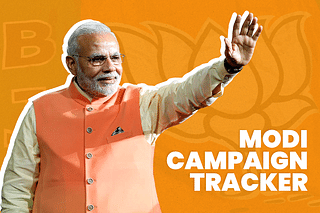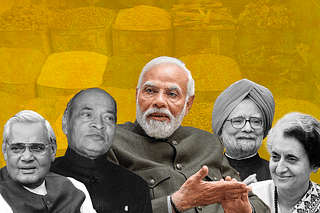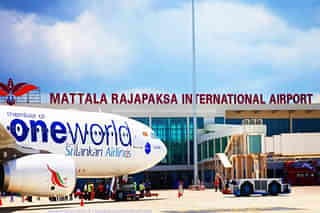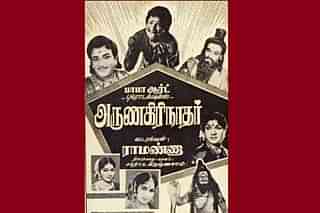Politics
How Left Media Uses Questionable Frames To Float Misleading Narratives About Hindus
Avinash Brahmbhatt and Dr Nidhi Shendurnikar
Jan 03, 2024, 11:45 AM | Updated 12:03 PM IST
Save & read from anywhere!
Bookmark stories for easy access on any device or the Swarajya app.

No major religious issue in contemporary times can be understood without the attention and intervention of mass media.
The media-religion relationship can be understood in two ways: first, use of media in disseminating knowledge about religion; and second, media’s representation of religious issues.
News regarding religion and religious institutions was of negligible importance till the beginning of the twentieth century. News pertaining to religion and religious practices was never considered “hard news” until the Islamic Revolution in Iran (1979) and, later, the emergence of other religious movements across the world.
A noticeable change in the coverage of religious news was seen after the 9/11 attack in the United States, but in India newspapers have reported copiously on riots between religious groups.
The destruction of the Babri Masjid led to a flood of reports and analyses of the nature of conflict between Hindus and Muslims, and the coming to power of the Atal Bihar Vajpayee-led National Democratic Alliance (NDA) government in 1998 opened the gates to a flurry of speculations about religion-inspired conflict.
With the vast changes brought about by digitalisation starting in the 1990s and the growth and power of social media starting in the early 2000s, digital spaces not only enabled people to read and learn about complex religious concepts, and amplify positive religious teachings, they were also used to spread hatred, bigotry, and exclusionary ideas (eg, the use of social media as a recruiting platform by terrorist organisations).
Scholars have noted that enhanced new media penetration has led to the loss of authority of religious institutions and their monopoly on disseminating 'faith', making people more dependent on media symbols, and visual representation for making sense of religion. In such a scenario, experts believe that 'media determinism', will make it extremely challenging for religious institutions to remain unaffected by media.
Digital News In India
The prominence and popularity of new media in general and digital news portals, in particular, are attributed to a conducive media-information landscape. According to a Reuters Institute/University of Oxford study, nearly 73 per cent of respondents in India accessed news through their smartphones, with 53 per cent of users accessing news via social media.
We examined the role of these digital news avenues (also called “alternative media”) in the reporting and analyses of news about Hindus and Hinduism.
Hinduism, Hindus, And Media Discourse
As the world’s oldest religion and an ancient civilisation, Hinduism is known to promote intellectual curiosity and inquiry. Hinduism’s beliefs, principles, traditions, practices, and spiritual doctrines are followed by 966 million adherents (Census 2011). Its worldview on politics and social justice has always been a subject of interpretation, deliberation and debate.
We took up an investigation of how Left-leaning digital news portals in India represent Hinduism, Hindus, and Hindu issues. The study is conceptually informed by ‘Hinduphobia’ (also referred to as ‘Hindumisia,’ or ‘Hindudvesha’ by some).
Additionally, we employed ‘News Framing’ to explore the techniques and strategies used to report on Hinduism. News frames highlight bits of information, render some aspects of news more salient to drive a certain news agenda, and compel audiences to think about issues in specific ways. Entman (1993) says frames are powerful tools used by media outlets to validate and legitimise one kind of narrative over others.
In the context of new (digital/social) media and Hinduism, research and existing literature are limited in terms of examining how cyberspace is advantageous for seeking a better understanding of Hinduism and how online platforms have contributed to the facilitation and flourishing of Hindu cultural festivals and rituals.
However, equal if not more attention needs to be given to how the same digital space doubles up as a purveyor of hatred and bigotry towards common followers of Hinduism.
Therefore, the nature of content, discourse, and representation of Hinduism in the digital sphere merits critical examination. While there is a plethora of academic literature that examines media representations of Christianity and Islam, we are lacking in such analyses of how Hindus and Hinduism are presented and represented in the media.
That Hindus are misrepresented, and Hinduism is demonised or mocked in the media is denied in mainstream media and academia both in India and the West.
It is considered as exaggerated, non-existent, a misnomer, and loaded with pejorative connotations. Instead, what we have is an excess of claims and allegations on what is labelled as ‘Hindu nationalism,’ ‘Hindutva,’ and the ‘otherisation’ of minorities by ‘Hindu supremacists’.
Study Of Two Digital News Portals
Our research focused on two Left-leaning digital news portals, viz, The Wire and The Quint, and their coverage of Hindus and Hinduism.
A content analysis of four major events in 2019 was undertaken: 1) The Lok Sabha elections; 2) The Ram Mandir verdict by the Supreme Court of India; 3) Passage of the Citizenship Amendment Act (CAA); and 4) Presentations of/about Hindu festivals such as Diwali, Holi, Navratri, Karwa Chauth, etc.
An analysis of the coverage of the above events was done to find out the dominant news frames employed by these portals in their reportage and commentary on Hinduism.
Additionally, in-depth interviews with media scholars, scholars in religious studies, journalists, historians, social media influencers, and op-ed writers were carried out to understand the nature of coverage of Hinduism in Left-leaning media and the reasons behind the dominance of specific media narratives in the digital space.
Results Of The Study
Hindutva as a dangerous ideology: On various news portals, coverage of Hinduism is often dominated by commentary and opinions on ‘Hindutva’. The discourse presents Hindutva as a dangerous ideology, militant in nature, exclusionary, and anti-Muslim with the use of terms such as ‘hostile', ‘saffron', etc.
Hindutva is presented as a threat to secular India and held responsible for dividing the nation on religious lines. It is associated with authoritarianism, jingoism, and an extremely aggressive nationalism.
For instance, in one article in The Quint, Hindutva is held responsible for a slide in India’s diplomatic relations with its neighbours. Hindutva and its association with politics are regularly portrayed negatively. The BJP's electoral victories are also attributed to Hindutva politics. See here, for example.
Both The Quint and The Wire predict that Hindutva will ultimately lead to the formation of a ‘Hindu Rashtra’ and that it will snatch constitutional dignity from Indian citizens. Comparing Hindutva to Islamophobia, they claim that, “the decision to cast Muslim as the illegal immigrant, and not simply as an outsider, allows the Hindutva ideology to complete its new alignment with Western Islamophobia”.
Majoritarianism and Muslim Minorities: Hindu votes for the BJP are considered a threat to India’s democratic and pluralistic ethos. A BJP victory is routinely attributed to Hindu ‘communalism’. While the consolidation of Hindu votes is framed as communalism, the consolidation of Muslim votes is framed as effective representation.
Terms like ‘Saffron terror’ and ‘Hindu terrorist'’ are employed, without use of any data. In one article, a graphic shows South Asian countries painted in saffron with the Rashtriya Swayamsevak Sangh (RSS) walking over and conquering them.
Similarly, in their coverage of the Citizenship Amendment Act, support for CAA is linked to ‘Hindu majoritarianism’. Support for CAA is used to portray Hindus as a community that abhors diversity and is against the spirit of democratic pluralism.
Under the guise of calling out majoritarian and supremacist political tendencies, such observations arbitrarily link Hindus and Hinduism to hate speech, bigotry, rigidity, and radicalisation.
News frames and narratives suggesting victimisation of Muslim ‘minorities’ at the hands of the Hindu ‘majority’ find particular emphasis on these news portals. The Ram Mandir verdict by the courts is presented as a betrayal and oppression of India’s Muslim minorities.
In the Ayodhya verdict by the Supreme Court of India, the news portals blame Hindus for reclaiming their own civilisational heritage, as if they are demanding and building a mandir on Muslim graves. The building of the temple is framed as the death of the Indian Constitution and constitutional values and a threat to the quintessential ‘Idea of India’.
Hindus are shamed for celebrating the verdict. Hindu symbols and slogans such as “Ram Mandir”, “Ramlalla", “Ram Rajya”, and “Jai Shree Ram,” are summarily framed as political slogans rather than social ones. The verdict is presented as ‘terror and fear’ under which Indian Muslims purportedly live and speculations are made about the future of India’s minorities after this landmark judgement.
The verdict is described as equivalent to darkness. The sensibilities of judges and the due process of law by way of which the verdict was delivered is challenged.
Deracination and de-Hinduisation: Hindu festivals like Diwali, Holi, Rakshabandhan, Makar Sankranti, Karwa Chauth, etc, are mocked and criticised. This coverage can be considered as attempts at deracination of Hindus from their heritage, culture, and civilisation, ie, de-Hinduisation.
Hindu festivals are politicised, whereas the same is not found in the reportage on festivals of other faiths. Diwali is linked to weight gain. It is also linked to air pollution and poor quality of air, especially in the National Capital Region. Many news narratives, thus, either discourage Hindus from celebrating their festivals or induce a sense of guilt in them if they choose to follow their traditions.
As part of the 'social justice’ frame, Hindu festivals are seen as opportunities to promote ideas about environmental awareness, gender equality, fairness, and pluralism. Value judgements are routinely passed on Hindu festivities, and sermons are given to the community on how they should go about celebrating their festivals.
For examples, see here, here, here, and here. Also, celebration of Hindu festivals such as Durga Puja, Ganesh Utsav and Dahi Handi is framed as land grabbing and encroachment, and a threat to religious minorities.
Expert Assessment
Interviews with experts on media coverage of Hinduism bring out some noteworthy observations:
In such media presentations, Hinduism is presented as a ‘primitive religion’ with many strange gods and evils through which marginalised castes and women are oppressed and dehumanised.
These portals tend to examine Hinduism from an obsessively hostile lens which is not applied to other religions and communities. Hindus are portrayed as a privileged majority community and dogmatic people, eg, many reports on Sabarimala analysed from a "gendered" lens.
Cases of intolerance and lynching with a religious angle are unfailingly linked to Hinduism, and Hindu society is demonised based on random, stray incidents of communal violence.
Left-leaning portals exhibit negativity towards Hinduism. The discourse on Hinduism is limited in its approach through which they comment on select aspects and attempt to tarnish the religion and the society as a whole.
The focus of the reportage is excessively on caste as well as other fault lines within the Hindu fold. Reportage on forcible religious conversions and communal violence promotes one-sided narratives in which Hindus are always the perpetrators and Muslims are always the victims.
According to the interviewed experts, among the many reasons for the emergence of ideologically driven digital news portals is a shift in India’s political landscape since 2014; the rise of a strong government and leadership at the centre; a thriving right-leaning ecosystem on social media; easy access to the Internet; increasing social media use by Indians; intention to resist established narratives; more supply and demand for ideologically-driven news; attempt to appropriate the idea of independent journalism (read anti-government discourse); and declining trust in mainstream media.
To report on Hindus and Hinduism, various left-Leaning digital news portals repeatedly use loaded keywords such as communal, divisive, casteist, intolerant, patriarchal, oppressive, superstitious, Brahminical patriarchy, fascist, genocide/genocidal, dictators, Islamophobia, Nazis, etc.
They present Hindus as culprits and oppressors even in cases where facts point otherwise. Making arguments devoid of verifiable references, context, and evidence; indulging in rhetoric and hyperbole; and exaggerating the threat to minorities by Hindutva groups; bringing a caste angle even in reporting random crimes where it is not at all a motive; one-sided coverage of communal clashes; silence about crimes committed by minorities; using old or false photographs; and emphasis on caste and communal angle in crimes are some of the frequent features on Left-leaning portals.
The government can play a role in ensuring fair representation of communities and communal issues in the media. Besides, systemic change is also needed in education, research, academia, policy and governance to provide a level-playing ground to Hindu aspirations in media.
Lack Of Historicity And Sensitivity
Media coverage of Hinduism attempts to regularly link issues faced by Hinduism to politics. It tends to deny common Hindu aspirations, losses, grievances, identity, and the presence of any social feelings. Thus, to criticise and help defeat a political party, these news portals consistently and unfairly attack Hindu values and ethos.
This media discourse pits different communities against each other and pushes a limited, binary understanding of their relationship. Hindus are by default presented as ‘privileged perpetrators’ whereas Muslims are always portrayed as ‘hapless victims’. This explains the scant attention to offenses committed by one side against the other, mostly in the name of minority rights.
The results of such coverage lead to the perpetuation of stereotypes, an increase in hate crime, and mainstreaming as well as legitimising of Hinduphobia in public life.
The nature of headlines and the tone of discourse employed by the portals are accusatory, inflammatory, critical, negative, sermonising, aggressive, politically motivated, and biased. There is little use of evidence, facts, and data to support the reporting, analyses, and opinions. Instead, the portals rely on hyperbole, exaggeration, and emotional appeals.
The portals attempt to deracinate Hindus and de-legitimise Hindu aspirations.
News frames suggest that Hindus ought to sacrifice their normal social, cultural, and political interests, and keep proving their loyalty to the Constitution, secularism, and the ‘Idea of India’, whatever it may be. These portals consider it the duty of only one community to ensure India’s integrity and act as custodians of democracy, federalism, and pluralism, even in the face of oppression.
Finally, a lack of historicity, sensitivity to context, and use of generalised tropes on Hinduism is apparent in the digital news coverage emerging from the Indian Left-leaning media space.
Note: This article is a shorter, abridged version of a research paper published by the authors in Summerhill — The Journal of the Indian Institute of Advanced Studies, Shimla.
Brahmbhatt, A, & Shendurnikar, N (2022). Media Narratives on Hinduism: A Study of Digital News Portals. Summerhill: IIAS Review, 28(2), 21–28. Link to full version here.
Save & read from anywhere!
Bookmark stories for easy access on any device or the Swarajya app.
Introducing ElectionsHQ + 50 Ground Reports Project
The 2024 elections might seem easy to guess, but there are some important questions that shouldn't be missed.
Do freebies still sway voters? Do people prioritise infrastructure when voting? How will Punjab vote?
The answers to these questions provide great insights into where we, as a country, are headed in the years to come.
Swarajya is starting a project with an aim to do 50 solid ground stories and a smart commentary service on WhatsApp, a one-of-a-kind. We'd love your support during this election season.
Click below to contribute.





